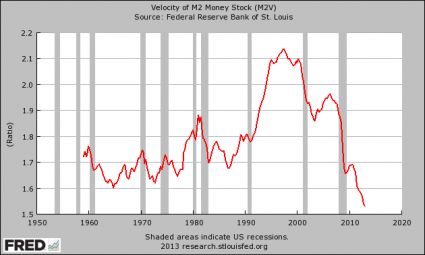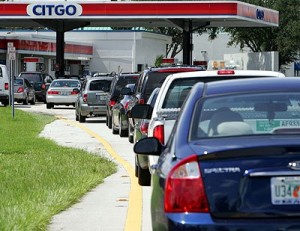 More than a million Americans were not supposed to be losing their jobs every week by the time we got to the middle of August. By now, vast hordes of unemployed Americans were supposed to be returning to their old jobs and economic activity was supposed to be returning to normal levels. But it hasn’t happened that way. Instead, the U.S. economy continues to unravel at a steady pace. Every week more businesses go under, more layoffs are announced and more people get behind on their bills. What we have already been through has been far worse than anything that we experienced during the last recession, and it appears that this new economic downturn is entering yet another new phase. On Thursday, we learned that another 1.106 million Americans filed new claims for unemployment benefits last week…
More than a million Americans were not supposed to be losing their jobs every week by the time we got to the middle of August. By now, vast hordes of unemployed Americans were supposed to be returning to their old jobs and economic activity was supposed to be returning to normal levels. But it hasn’t happened that way. Instead, the U.S. economy continues to unravel at a steady pace. Every week more businesses go under, more layoffs are announced and more people get behind on their bills. What we have already been through has been far worse than anything that we experienced during the last recession, and it appears that this new economic downturn is entering yet another new phase. On Thursday, we learned that another 1.106 million Americans filed new claims for unemployment benefits last week…
The number of people filing for unemployment benefits last week was greater than expected, raising concern about the state of the economy as lawmakers struggle to move forward on a new pandemic stimulus package.
The Labor Department said Thursday that initial jobless claims for the week ended Aug. 15 came in at 1.106 million. Economists polled by Dow Jones expected a total of 923,000. Initial claims for the previous week were also revised higher by 8,000 to 971,000.
Instead of going down as most analysts were anticipating, the number of initial claims shot way back above a million.
And this means that we have now gotten a number that is above a million for 21 of the last 22 weeks.
Prior to 2020, the worst weekly number in all of U.S. history was 695,000. To absolutely dwarf that old record for 22 weeks in a row should be almost theoretically impossible. If you would have asked me last year what it would take to have the kind of unemployment numbers that we are seeing now, I would have probably suggested that it would take something like a world war or a major asteroid strike to produce such figures. The numbers that we keep getting week after week are simply absurd, but they just keep coming.
After all this time, the number of Americans filing for unemployment should be falling back below record levels, but instead last week we got a number that was more than twice as high as anything that we witnessed during the last recession…
“However, the number of individuals claiming benefits remains extraordinarily high – more than twice the peak of the great recession – underscoring that the labor market is a long way from being healthy,” economist Nancy Vanden Houten wrote in a note to clients.
It would be difficult to overstate the scale of the economic devastation that we are witnessing.
Do you remember Hurricane Katrina? It was the worst natural disaster in the history of Louisiana, but in 2020 the state has lost twice as many jobs as it did after Hurricane Katrina.
Just think about how crazy that is.
Overall, 57.3 million Americans have filed new claims for unemployment benefits over the past 22 weeks.
57 million.
We’ve never seen anything like this in our history. For a while, our unemployed workers were being kept afloat by a 600 dollar a week federal supplement, but now those extra benefits have expired…
Those recipients who are receiving unemployment on an ongoing basis are now getting far less aid because a $600-a-week federal benefit has expired, which means the unemployed must now get by solely on much smaller aid from their states.
The loss of the federal benefit has deepened the struggles for many, including a higher risk of eviction from their homes.
President Trump has signed an executive order that would provide payments of 300 dollars a week to unemployed workers, but many states have chosen not to participate in that program.
So we should expect the level of economic suffering in this country to go up even more. At this point, tens of millions of Americans are unable to pay their bills, and that number will almost certainly increase in the months ahead.
Meanwhile, we are seeing businesses fail at a rate that is absolutely unprecedented. For example, the hotel industry is warning that close to a quarter of all hotels in the United States “are at risk of foreclosure”…
In a desperate plea for help, the hotel industry said it faces a default disaster, in which 25% of hotels are at risk of foreclosure.
The report, sent to Congress this week and compiled by Trepp, shows that the percentage of hotel loans 30 or more days delinquent is 23.4% as of last month — the highest percentage on record. By comparison, the percentage of hotel loans that were 30 or more days delinquent at the end of 2019 was just 1.3%.
The hotel industry wants a federal bailout, but of course just about every other major industry wants one as well.
In the end, Congress is going to decide where the money goes, and not everyone will come out a winner.
The overall global economy is deeply struggling as well. In fact, the level of merchandise trade around the world just fell to the lowest level on record…
“This reading – the lowest on record in data going back to 2007, and on par with the nadir of the 2008-09 financial crisis – is broadly consistent with WTO statistics issued in June, which estimated an 18.5% decline in merchandise trade in the second quarter of 2020 as compared to the same period last year,” the WTO said.
This is what an economic collapse looks like, and the entire planet is being hit extremely hard.
But at least the U.S. stock market is doing well. Stock prices have been absolutely soaring in recent weeks, and according to Forbes the market is now “about 77.0% overvalued”…
According to the popular market cap to GDP ratio, the U.S. stock market, collectively, is about 77.0% overvalued. Despite the worst economic backdrop since the Great Depression, stocks have held up reasonably well since the March 23 bottom. While it’s true that the stock market has disconnected from the underlying economy, it has also done so in the past. With such an extreme level of overvaluation, it does beg the question, “Are we witnessing the formation of another bubble?”
So for the moment, America’s financial idol is safe.
Unfortunately, this stock market bubble is going to be a whole lot shorter than the last one.
Thanks to unprecedented intervention by the Federal Reserve, stock prices have been pumped up to record levels, but we are only in the early chapters of this economic storm.
Much worse is coming, and without a doubt the Fed will try to keep asset prices inflated, but in the end it will be a losing battle.
As we keep getting hit by one crisis after another, eventually investors are going to figure out that the future ahead of us is not a positive one, and when confidence about the future disappears so will the bubble.
***Michael’s new book entitled “Lost Prophecies Of The Future Of America” is now available in paperback and for the Kindle on Amazon.com.***
About the Author: My name is Michael Snyder and my brand new book entitled “Lost Prophecies Of The Future Of America” is now available on Amazon.com. By purchasing the book you help to support the work that my wife and I are doing, and by giving it to others you help to multiply the impact that we are having on people all over the globe. I have published thousands of articles on The Economic Collapse Blog, End Of The American Dream and The Most Important News, and the articles that I publish on those sites are republished on dozens of other prominent websites all over the globe. I always freely and happily allow others to republish my articles on their own websites, but I also ask that they include this “About the Author” section with each article. In addition to my new book, I have written four others that are available on Amazon.com including The Beginning Of The End, Get Prepared Now, and Living A Life That Really Matters. (#CommissionsEarned) The material contained in this article is for general information purposes only, and readers should consult licensed professionals before making any legal, business, financial or health decisions. I encourage you to follow me on social media on Facebook and Twitter, and any way that you can share these articles with others is a great help. During these very challenging times, people will need hope more than ever before, and it is our goal to share the gospel of Jesus Christ with as many people as we possibly can.


















